The Top 4 Business Proposal Trends No One is Talking About (+ Free Report)
Published: November 19, 2019Updated: December 20, 2024

How have proposals changed over the past five years? And what do these changes mean for the next proposal your sales team sends? Here are four of the biggest trends and the data-driven changes behind them, plus our expert insights into how to use them to improve your own win rates in 2020.
Here at Proposify, when we talk about proposals and how to improve them we usually talk about things like:
All that good stuff definitely can make for a winning proposal. But that’s talking directly about YOUR proposals.
What about the millions of other proposals out there, winging their way into inboxes, locking down signatures, and closing like the wind?
Maybe these proposals are from some of your competitors. Wouldn’t you like to know what they look like? What makes them so successful? Basically, what’s the difference between a winning proposal and a losing one?
Let’s talk about that.
Today, I’m going to show you four emerging trends identified by analyzing proposal-sending data and statistics from our users here at Proposify over a five-year span, comparing 2014 to 2019.
I’ll also share actionable tactics and strategies so you can make sure your proposals aren’t getting left behind.
One note before we dig in: this is a look at high-level trends, so if you’re looking to get into the nitty-gritty of proposal creation today, I’d recommend checking out the links up top.
OR you can grab our free State of Proposals 2019 report. It contains even more statistics from our deep-dive into what makes more than 1.6 million proposals successful (or not!).
Deals going dark? We can help.
Discover what more than 2M proposals can teach you about getting ahead of the competition. Shine a light on your next opportunity with insight and advice from the proposal experts.
Get The Free Report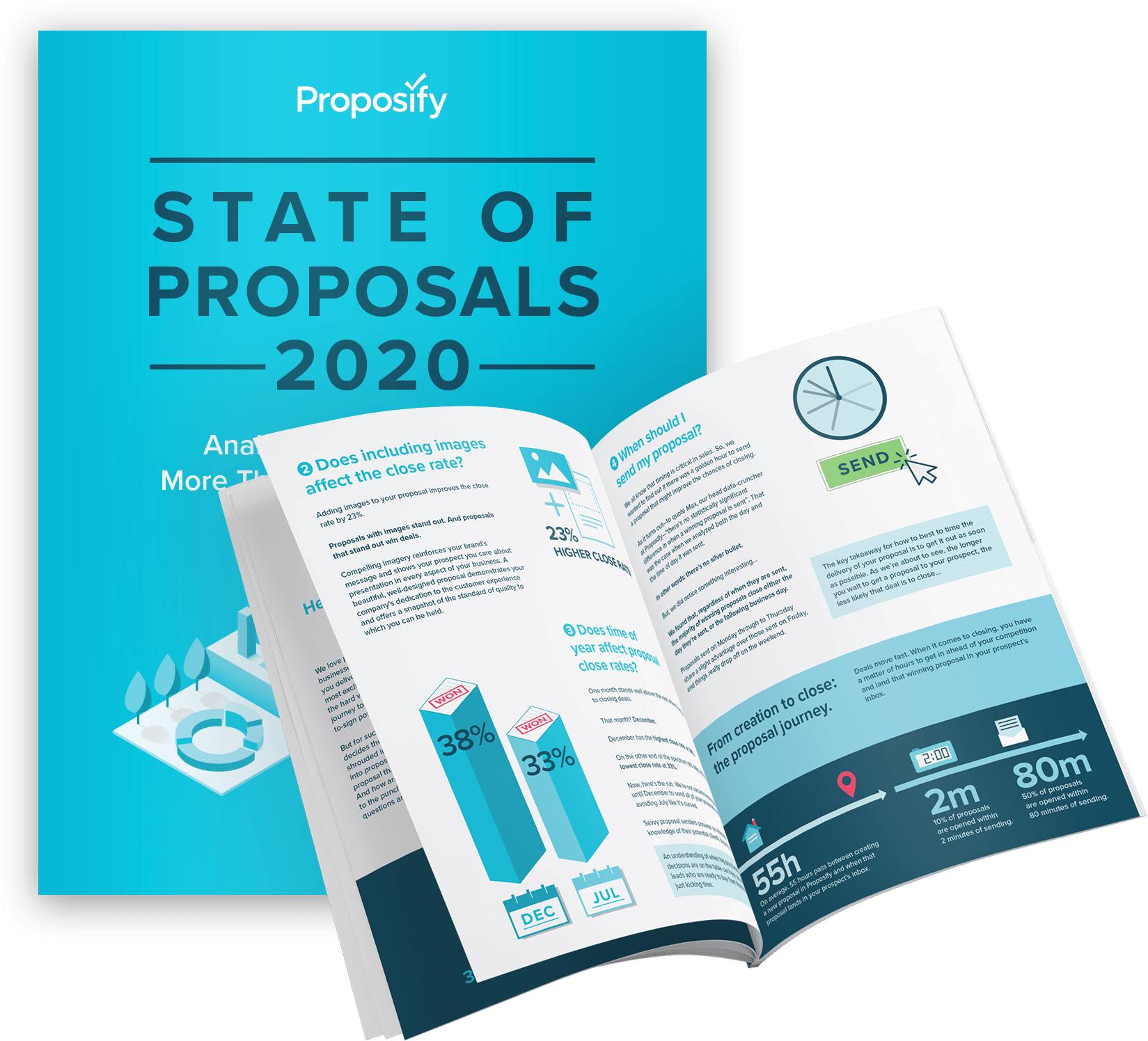
Right now, though, let’s find out how proposals have changed over the past five years and what it all means for the next one your team sends.
4 proposal trends that show you how to win in 2020
Proposal Trend 1: Proposals have 2 fewer sections but 57% more content.
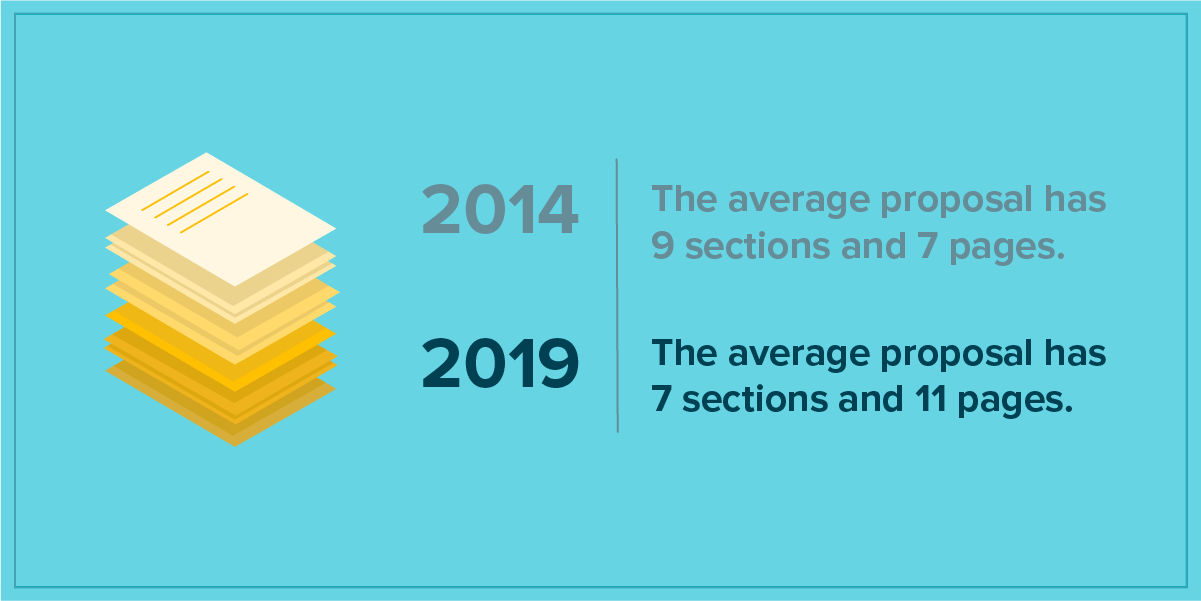
Over the last few years, the average proposal has been shedding sections. However, overall we’ve found that proposals now have a bigger page count.
Maybe people aren’t as into putting labels on things. Or they’re getting smart and jettisoning sections that aren’t absolutely required for getting sign-off (like minutely-detailed project timelines).
This kind of proposal editing gives an opportunity to expand on the remaining sections, whether that involves adding more written content and white space to your layout or more visual elements, like images, videos and tables.
Images, in particular, are a great way to help your proposal win. In looking at the proposal data, we found that adding images to a proposal improves close rates by 23 percent.
Proposal Trend 2: Proposal creation turnaround time has decreased by 70%.
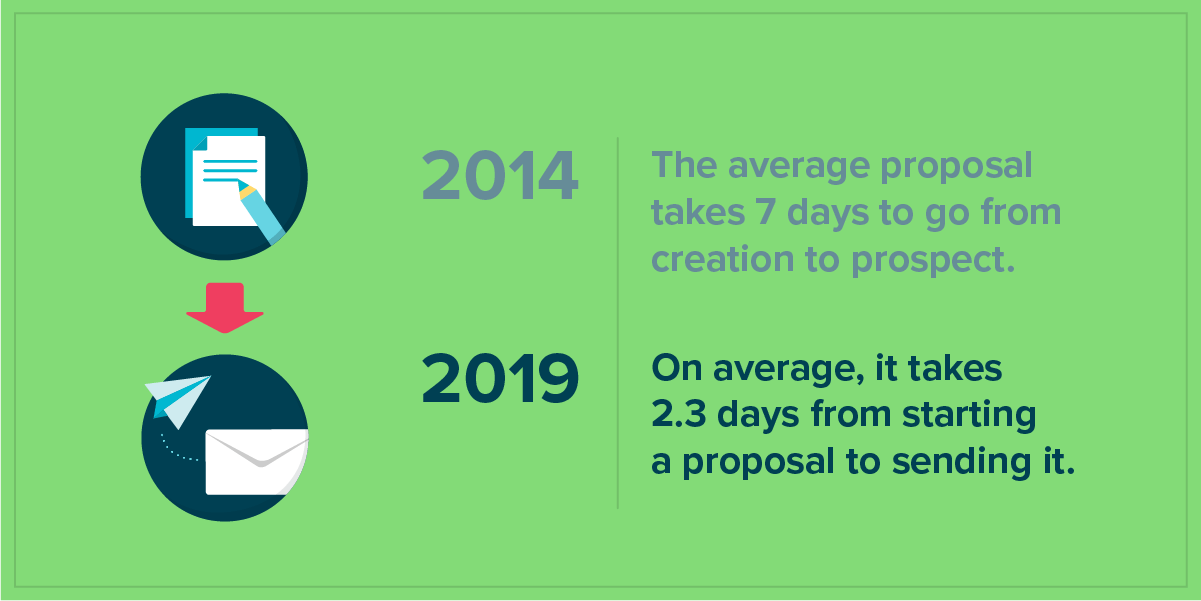
Being the fastest might not guarantee a win, but it does give your proposal a great head start against the competition.
If your proposal output is still happening at 2014 speeds, there are a few ways to kick your creation process into high gear.
The numbers we’re seeing seem to indicate it’s not all about speed, though. I mean, if it were we’d probably see proposal length also getting shorter, to help them get out the door at top speed.
It’s likely more about the ease of creation. Proposal creators now have better ways to collaborate with colleagues and are using more proposal templates and reusable content snippets to turn proposals around faster.
Or they may even be introducing someone in a dedicated proposal coordinator or manager role to oversee the process and prevent bottlenecks between departments and amongst internal stakeholders and contributors.
Proposal Trend 3: Proposals are opened by prospects 20x faster.
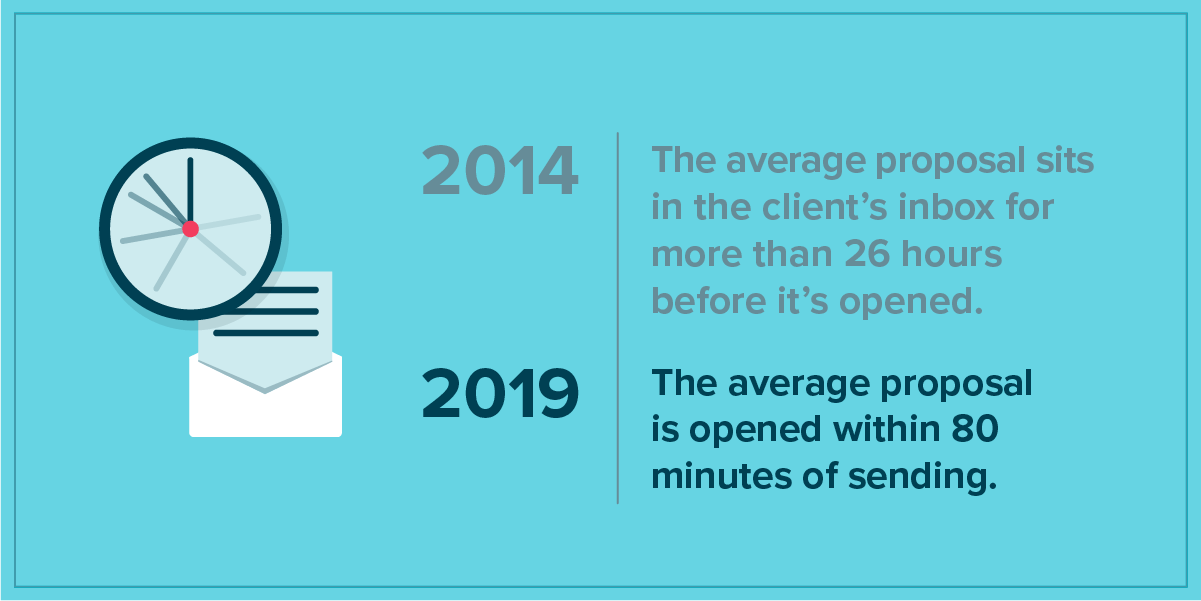
Is there anything sadder in B2B sales than the thought of a great proposal languishing unopened in a prospect’s inbox for days on end?
Luckily, it looks like that kind of agonizing lag time is becoming a thing of the past.
There are a couple of things this could be tied to:
- Quicker turnaround on the vendor side creates a similar sense of urgency on the prospect’s part as well.
- The overall speed of business has increased.
- And an increase in the ‘always-on’ business culture.
That last one is important. Even in the relatively short span of five years, you can chart the continued rise of mobile and its impact on business trends.
Our latest data shows that a quarter of all prospects now have their first interaction with a proposal on a mobile device. So if you’re not optimizing for mobile delivery, you’re slowing down your sales cycle.
Proposal Trend 4: Most sign-offs now occur in 1/7th the amount of time.
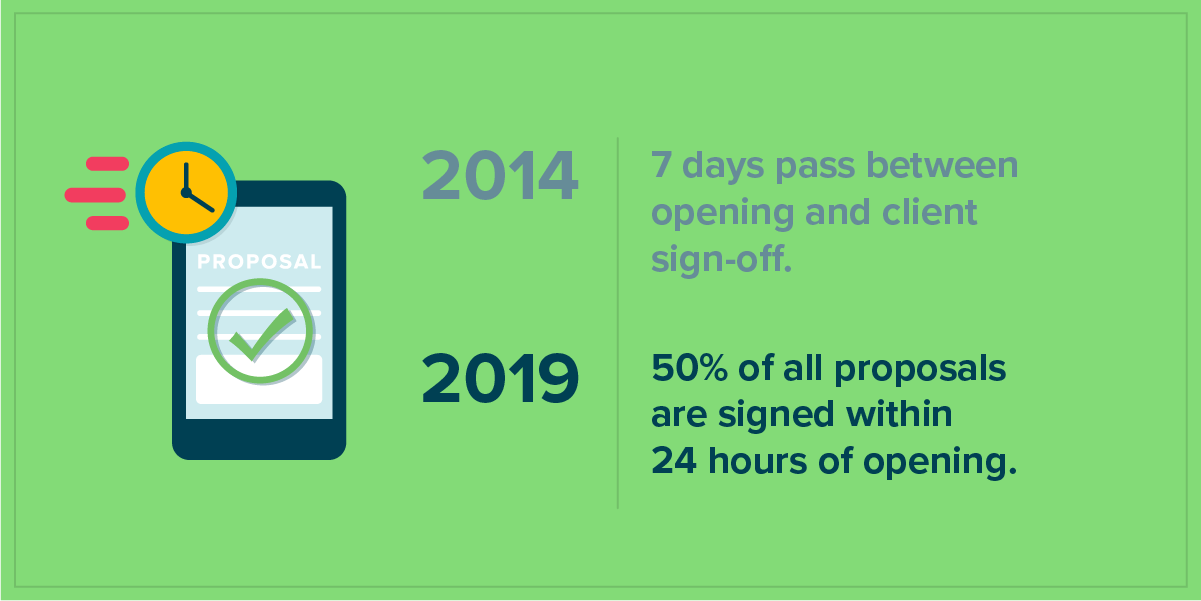
Waiting less than a day instead of a week for deal confirmation sounds amazing. How is the average proposal achieving this feat?
It could start all the way back at the beginning of the sales process with more robust lead qualification. Disqualifying more prospects upfront means fewer proposals end up getting sent to dead-end leads.
Instead, proposals are going out to highly qualified prospects who are primed to open them quickly and add their signature even faster.
It could also be adding more self-select options to proposals. For example, including a couple of packages with optional add-ons could reduce the amount of back-and-forth required between the prospect and sales rep. The prospect could simply check their selections and sign right away, no game of ‘email tag’ needed.
But if there are questions, a feature like in-proposal chat could help the proposal close faster because the prospect and salesperson could discuss while the prospect is looking at the proposal.
But if I had to bet, I’d say the proposal feature with the biggest impact on time-to-close over the past five years is the electronic signature.
Back in 2014, the data showed that using online signatures in your proposals definitely helped to close deals faster. Now, in 2019, not only do we know that electronic signatures help get quicker sign-off, but they also make proposals 3.4 times more likely to close.
That’s a win-win.
Conclusion
There you have it: the content, sending, and sign-off trends that are influencing proposal win-rates in 2019 and 2020. Which one do you think will have the most impact on your future proposals?
To me, the most important trend is the one about proposal creation.
Your proposals can’t close the deals if you can’t even get them out to prospects, so a streamlined sales doc creation process is vital to your sales cycle. That’s where companies that use proposal software like Proposify gain that edge over their competition.
Want more key proposal facts and figures like these? Check out our State of Proposals 2019 Report and subscribe to our blog to make sure you get all the data-driven updates from the proposal experts here at Proposify.


